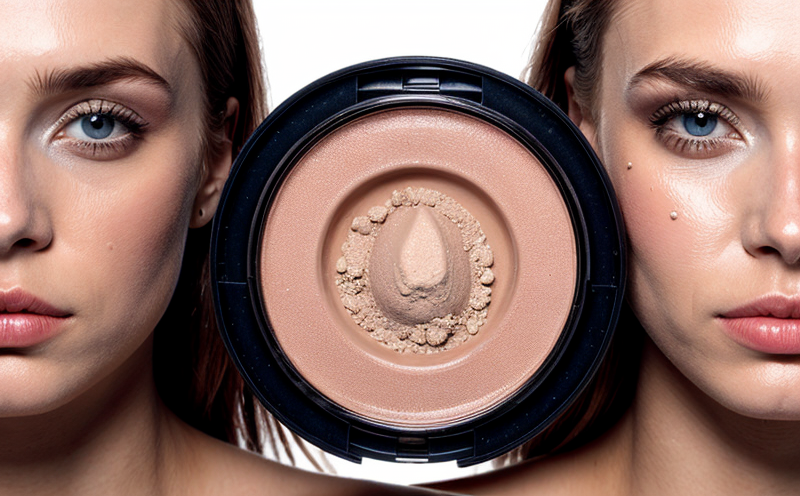Heavy Metal Contamination Testing in Sunscreens
The testing of heavy metals in sunscreens is a critical aspect of ensuring product safety and regulatory compliance. Heavy metal contamination can arise from various sources, including manufacturing processes, raw materials, or environmental factors during transport and storage. The presence of heavy metals such as lead (Pb), mercury (Hg), cadmium (Cd), chromium (Cr), and arsenic (As) in sunscreens is particularly concerning due to their potential health risks.
Quality managers and compliance officers are tasked with ensuring that the products they handle meet stringent safety standards. This involves understanding not only the theoretical risks but also the practical challenges involved in testing these contaminants. Regulatory bodies like the European Union, United States Food and Drug Administration (FDA), and others have set limits on heavy metal levels to protect consumers from potential harm.
Our laboratory specializes in providing comprehensive testing services for heavy metals in sunscreens, offering a range of methods that align with international standards such as ISO 17025. We use state-of-the-art instrumentation like ICP-MS (Inductively Coupled Plasma Mass Spectrometry) to ensure accurate and precise measurements down to the lowest detectable limits.
Testing for heavy metals in sunscreens is a multi-step process that involves specimen preparation, sample digestion, and instrumental analysis. Specimen preparation typically includes homogenization of the sunscreen samples followed by digestion using strong acids like nitric acid or perchloric acid. The digested samples are then analyzed using ICP-MS to identify and quantify trace levels of heavy metals.
Our laboratory adheres strictly to international standards such as ISO 17025, which ensures that our testing methods are reliable and reproducible. We provide detailed reports that include not only the concentration of each heavy metal but also any additional data relevant to product safety and compliance.
The importance of this testing cannot be overstated, especially given recent recalls due to heavy metal contamination in cosmetic products. By partnering with us, quality managers and R&D engineers can ensure that their sunscreens meet all regulatory requirements and are safe for consumer use.
- Comprehensive Testing: Our laboratory offers a full range of tests designed to detect even trace levels of heavy metals.
- Expertise: Our team of experienced chemists and technicians specializes in cosmetic testing, ensuring accurate results every time.
In conclusion, the testing of heavy metals in sunscreens is crucial for maintaining product safety and regulatory compliance. By leveraging advanced instrumentation and adhering to international standards, our laboratory provides reliable and precise testing services that meet the needs of quality managers, compliance officers, R&D engineers, and other stakeholders.
Applied Standards
The testing for heavy metals in sunscreens is governed by several key international standards. These include ISO 17025, which ensures that our laboratory meets the highest quality requirements. Additionally, we adhere to FDA guidelines and EU regulations regarding heavy metal limits in cosmetics.
For accurate testing, it is essential to follow specific procedures outlined in these standards. Sample preparation involves homogenizing sunscreen samples followed by digestion using nitric acid or perchloric acid. This process ensures that all components of the sample are dissolved, making them accessible for instrumental analysis.
The most commonly used method for detecting heavy metals in sunscreens is ICP-MS (Inductively Coupled Plasma Mass Spectrometry). This technique allows for highly sensitive and precise measurements down to parts per billion (ppb) levels. The instrument ionizes the sample, which then passes through a plasma torch where it is further atomized into ions. These ions are separated based on mass-to-charge ratio before being detected by a mass spectrometer.
Our laboratory also employs other complementary methods such as atomic absorption spectroscopy (AAS) and inductively coupled plasma optical emission spectrometry (ICP-OES). AAS is particularly useful for detecting lower concentrations of certain heavy metals like lead, while ICP-OES provides broader coverage across multiple elements.
By adhering to these international standards and using advanced instrumentation, our laboratory ensures that the results are both accurate and reliable. This approach not only meets regulatory requirements but also enhances consumer confidence in the safety and quality of sunscreen products.
Scope and Methodology
The scope of heavy metal contamination testing for sunscreens includes a comprehensive examination of various elements that could potentially pose risks to human health. This encompasses not only traditional heavy metals like lead, mercury, cadmium, chromium, and arsenic but also emerging contaminants such as antimony (Sb) and selenium (Se).
Our laboratory follows strict protocols for specimen preparation, which begins with collecting representative samples from sunscreens of interest. These samples are then subjected to rigorous digestion processes using strong acids like nitric acid or perchloric acid to break down complex compounds into simpler forms.
The digested samples undergo instrumental analysis using ICP-MS (Inductively Coupled Plasma Mass Spectrometry), which provides highly accurate and precise measurements of heavy metal concentrations. This method allows us to detect even trace amounts of contaminants, ensuring that no potential hazard is overlooked.
Additionally, we use complementary techniques such as atomic absorption spectroscopy (AAS) for detecting lower concentration limits and ICP-OES for broader elemental coverage. These methods complement each other by providing a comprehensive view of the heavy metal content in sunscreens.
The methodology employed ensures that our testing results are reliable and consistent with international standards. By adhering to ISO 17025, we maintain the highest level of quality assurance throughout the entire testing process.





